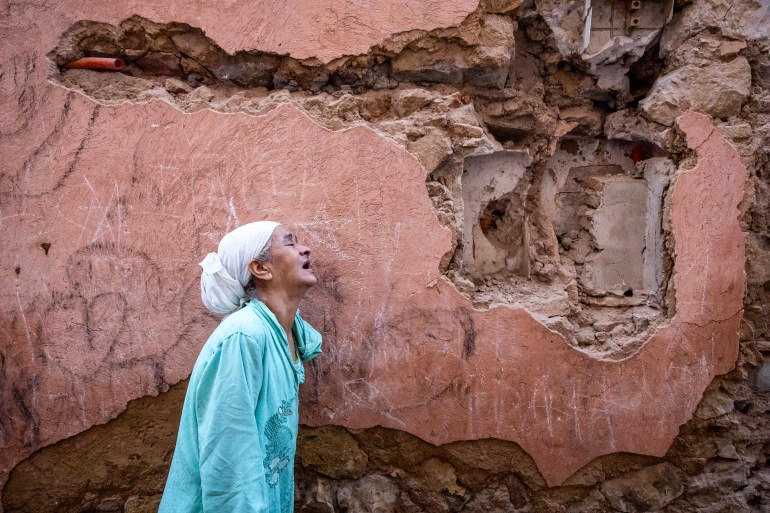Where in Morocco did the 6.8 magnitude earthquake strike?
Deadly earthquake’s epicentre was recorded in the High Atlas Mountains in an area not usually associated with temblors.

The earthquake’s epicentre was the Ighil area, a mountainous rural commune home to small farming villages in the al-Haouz province near the ski resort of Oukaimeden in the Atlas Mountains.
Lanchen Haddad, a Moroccan senator and former minister, told Al Jazeera the area was “not known for being active in terms of earthquakes”.
Keep reading
list of 4 itemsMorocco’s powerful earthquake: What we know so far
Photos: Hundreds dead after powerful earthquake rocks Morocco
‘Fragile state’: Fears for Marrakesh’s ancient structures after earthquake
The epicentre, he said, was near some “very difficult terrain” and is home to the Tizi-n-Test, a small pass in the High Atlas Mountains that can be crossed by a road connecting Marrakesh and the southwestern city of Taroudant.
“There’s not been very many earthquakes in that part of Morocco, most occur in the area much farther north on the Mediterranean coast near the tectonic plate,” Chris Elders, a structural geologist from Australia’s Curtin University, told Al Jazeera.
“The Atlas Mountains are a zone of weakness within Morocco with a very long geological history. Stresses build up in those areas. Africa is moving north towards Europe, and that is what caused the earthquake to occur in this particular area.”

‘Death toll to climb’
The epicentre was 75km (44 miles) from Marrakesh, Morocco’s fourth largest city. The city’s old town, a UNESCO World Heritage site, is reported to have been particularly affected with images emerging of collapsed buildings.
The worst-hit area is around the epicentre in al-Haouz province, southeast of Marrakesh, but the Ouarzazate, Azilal, Chichaoua and Taroudant provinces have also been badly hit.
The earthquake was felt across the country, including the coastal towns of Imsouane, about 180km (102 miles) to the west of Ighil and Essaouira, 200km (124 miles) west of Marrakesh.
The earthquake was even felt in the capital, Rabat, 350km (220 miles) north of the epicentre, and as far away as Portugal and Algeria.
Initial reports suggest damage and deaths were severe throughout the Marrakesh-Safi region, which more than 4.5 million people call home.
“The problem is that where destructive earthquakes are rare, buildings are simply not constructed robustly enough to cope with strong ground shaking, so many collapse resulting in high casualties,” said Bill McGuire, professor emeritus of geophysical and climate hazards at University College London.
“I would expect the final death toll to climb into the thousands once more is known. As with any big quake, aftershocks are likely, which will lead to further casualties and hinder search and rescue.”

National and provincial response
The earthquake hit after 11pm local time (22:00 GMT) on Friday evening, according to the United States Geological Survey (USGS), which measured its magnitude at 6.8 and said it was at a relatively shallow depth of 18.5km (11.5 miles).
The earthquake is the country’s deadliest since a 2004 tremor near al-Hoceima, in the northern Rif mountains, killed more than 600 people.
Haddad told Al Jazeera since the 2004 earthquake, the government has worked on a sophisticated plan for “rapid intervention” with a two-tiered system, including both national and provincial response operations.
In a sign of the huge scale of the disaster, Morocco’s King Mohammed VI ordered the armed forces to mobilise air and land assets, specialised search-and-rescue teams, and a surgical field hospital.
But despite an outpouring of offers of help from around the world, the Moroccan government had not formally asked for assistance, a step required before outside rescue crews could deploy.